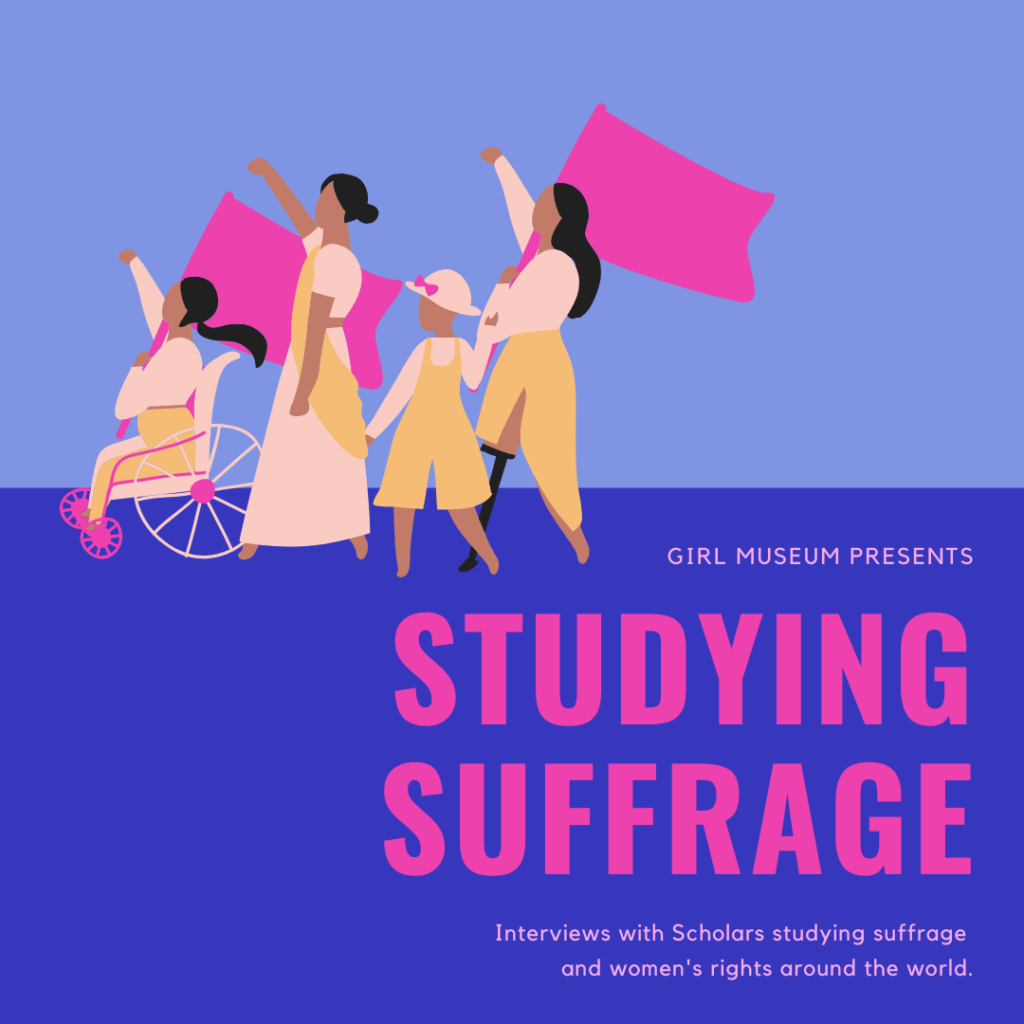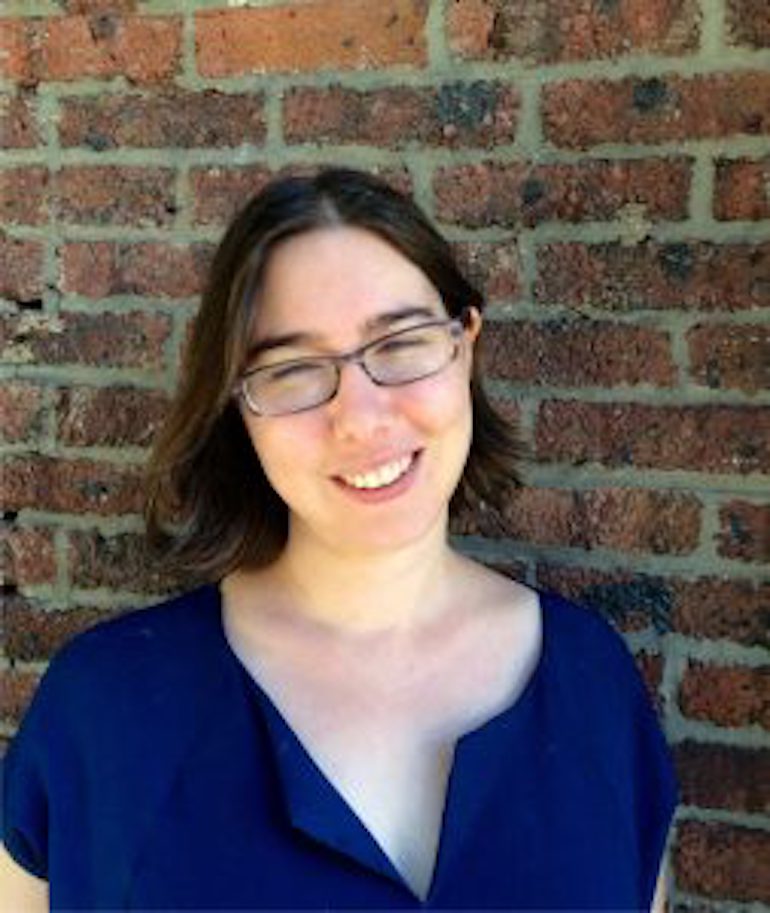
In conjunction with our Young Suffrage exhibition, we would like to share a series of interviews with academics who are actively studying the suffrage movement and women’s rights around the world. Below is an extensive Q&A with scholar Einav Rabinovitch-Fox. Questions from Girl Museum are bolded.
Tell us about your research and background. What is your specialty?
I’m a historian who specializes in the cultural and social history of the modern United States, and specifically women’s and gender history. My current research examines the role of fashion and consumer culture in shaping gender, race, and class identities, as well as the role of culture in social movements. Specifically, I explore how questions of beauty and appearance were an important part of feminist struggles and ideology during the twentieth century, using fashion as a lens to revisit our understanding of feminism.
What is your favorite period of history to read about/study?

I really love the 20th century. While my expertise lies in the earlier decades of the century and the rise of modernity, I have been reading a lot lately about the 1960s and 1970s and enjoying it very much. I find a lot of parallels between the decades of the 1920s and 1930s, as well as the 1970s to our present time, so it is interesting to learn how people faced and thought about similar questions that our society is dealing with now.
What was your research process like?
The fun thing for me being a historian is that I get “to touch” history through documents, images, and objects. What I like best is to sit in an archive and go through documents and pictures and try to figure out what the story behind them. Because I write about fashion I also have the luxury to read women’s magazines as part of my research. I can’t really think about a better way to spend your research by reading Vogue. 🙂 But what I really like is to work in costume collections. Seeing the actual dresses and clothes can tell you things that an image never will. I think that history has a lot to do with storytelling, so part of what I do, is to take all the sources that I find and construct a narrative about them. In a way, it is like sewing a garment made out of different fabrics.
What is the most common misconception people have about girls and young women, and their place in the suffrage movement?
Maybe the most common misconception is that girls and young women were marginal to the movement. The images we have of suffrage leaders are often when they are mature and even old women, but many started their activist career when they were very young or in college. In fact, colleges around the country were a very important recruiting ground for the movement and many known activists like Inez Milholland, Alice Paul, Maud Park, and Lucy Burns started their involvement in the movement when they were in college. Working-class women, who did not get an education, but were still very active in the movement were also girls and young women. Clara Lemlich for example, who led the famous garment strike of 1909 was only 22 when she did it, and she was already a seasoned activist at that age. Even Susan B. Anthoney, who we tend to think about as an old lady, started her involvement in suffrage when she was 28, so a pretty young age. Jane Addams founded Hull House when she was 29.
Many of the suffragists were “New Women” – representing a young generation that came of age in the last decades of the 19th century and early 20th century of women who sought more independence and influence in the public sphere. While we tend to think about these women as old, these were young women who were at the forefront of reform and political movements during this period and they were the ones who shaped the movements and the struggle in its last stages in the early 20th century. I don’t know if I would call the suffrage movement a “youth movement” per se, but certainly the more radical side of it was led by young women, and they were the ones who went marching and picketing, and implemented new campaign tactics that eventually brought the victory.
Another thing to remember is that many of the suffragists never married. They always remained Miss, which gave them a more younger appeal than they actually were.
What impact, if any, did the rise in consumer culture have on the suffrage movement in the early 20th century?
Consumer culture had a major impact on the movement. By 1900, due to the rise of magazines, department stores, and advertising, suffragists became much more visually conscious, being well aware that it is not just the message that counts, but also how you deliver it. They were very savvy regarding utilizing images to popularize their cause, putting a lot of emphasis on their appearance, color, pageantry, and decoration.
Suffragists also used selling techniques like colorful postcards, posters, and billboards, and made deals with department stores like Macy’s in NYC to sell their regalia. This tactic helped them to popularize their message but also to raise money for the movement. Suffragists also used their position as consumers as a legitimization for their presence in downtown districts and used department store windows to promote their cause. They staged “voiceless speeches,” where a young, fashionable suffragist would hold changing signs with slogans for suffrage in a store window.
In many aspects, suffragists implemented this new type of campaigning that now seems so natural to our political system. But they were actually the first who utilized advertising tactics in “selling” a political idea.
Many suffragists who were involved in the campaign, whether as journalists, illustrationists, and managers would later go to work in the budding advertising industry in the 1920s, bringing the experience they gained to sell consumer products.
Tell us about the most surprising or unique thing you uncovered in your research around gender and politics.
I think what was most surprising is how much feminists cared and were interested in fashion. Despite the myth that all feminists are shabby looking, or worse, hostile to the idea of fashion, I discovered that clothing and fashion were a very useful tool to promote ideas about gender equality and that feminists cared deeply about and utilized fashion as part of their politics. Although there was never a single or distinct “feminist style” of clothing, some concepts like comfort and utility, as well as beauty, do exist. Also, there are “fashionable legacies” that are still very much with us. For example, white, which became a color associated with suffrage, was used also in later feminist protests and demonstrations, both by politicians and activists. Wearing white in the political context became a show of support to the suffrage idea and gender equality.
Anything else that you would like people to know about “baby suffragettes?”
That you can never be “too young” to become active in politics. Small girls and even children were very much involved in the suffrage campaign. So age should not be a deterrent to get involved in politics. Many known suffragists began their careers when they were young girls. Some came to the movement through their mothers, who were active too, and some through their peers in schools. And despite their young age, they managed to accomplish great things. So people should not dismiss today’s young activists for their age. It is usually the young ones who change the world.
-Sage Daugherty
Associate Editor
Girl Museum Inc.
